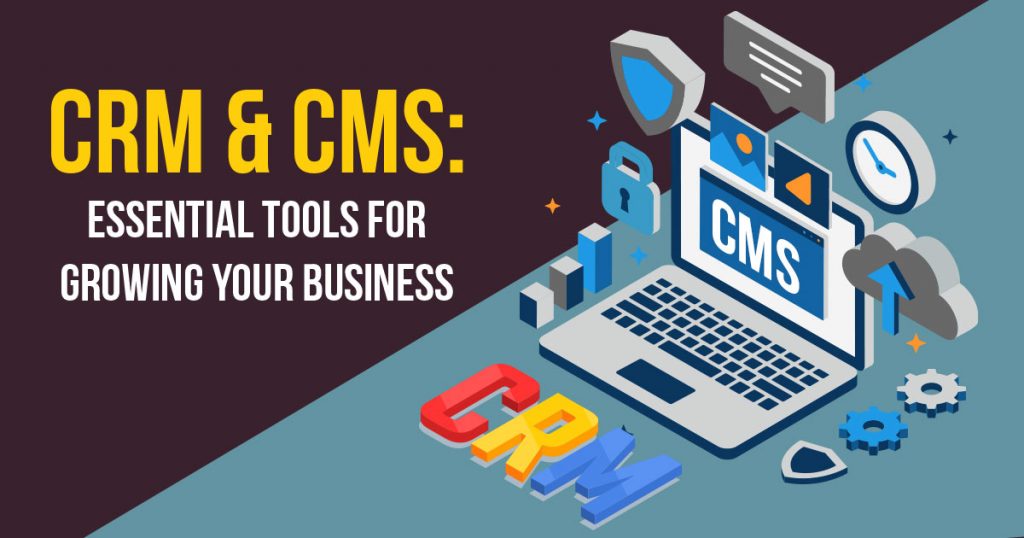Businesses often use various tools to manage their operations and customer interactions. Two essential systems in this mix are Customer Relationship Management (CRM) and Content Management Systems (CMS). While they serve different purposes, understanding their roles and how they can work together can help optimize business processes.
What is CRM?
A CRM is a tool that helps businesses manage interactions with current and potential customers. It stores customer data, tracks interactions, and manages sales processes. This system is crucial for businesses aiming to enhance customer relationships and boost sales efficiency.
For instance, a CRM can help sales teams keep track of leads, monitor customer interactions, and analyze sales pipelines. This centralized approach ensures that all customer-related information is accessible in one place, making it easier for businesses to provide personalized experiences and build lasting relationships.
What is CMS?
A CMS is a platform that allows users to create, manage, and modify digital content on a website without needing extensive technical knowledge. It streamlines the process of publishing content, making it accessible for teams to keep websites updated and engaging.
With a CMS, businesses can easily manage website content such as blog posts, landing pages, and product information. This flexibility ensures that the website remains dynamic and relevant, catering to the evolving needs of the audience.
Key Differences Between CRM and CMS
While both systems are vital, they cater to different aspects of a business’s operations.
Functionality: A CRM focuses on managing customer data and sales processes, helping businesses track interactions and nurture relationships. In contrast, a CMS is designed for content creation and management, enabling teams to publish and organize website content efficiently. Essentially, a CRM is about understanding and managing customer relationships, while a CMS is about managing the content presented to those customers.
User Roles: Typically, sales and customer service teams utilize CRMs to monitor customer interactions and manage pipelines. On the other hand, marketing and content teams primarily use CMS platforms to handle website content and digital marketing efforts. This distinction ensures that each team has the tools they need to perform their roles effectively.
Impact on Sales Journey: CRMs directly influence the sales process by providing insights into customer behavior and facilitating targeted communication. CMS platforms support this journey indirectly by delivering relevant content that can attract and inform potential customers. For example, while a CRM might help a sales rep understand a customer’s purchase history, a CMS ensures that the website content aligns with the customer’s interests, guiding them towards a purchase decision.
Benefits of Integrating CRM and CMS
Combining the strengths of both systems can lead to significant advantages.
Enhanced Personalization: Integrating CRM data with your CMS allows for delivering personalized content to users based on their interactions and preferences, leading to improved customer engagement. For instance, if a CRM indicates that a customer is interested in a particular product category, the CMS can display related products or content when the customer visits the website.
Streamlined Processes: Integration reduces manual data entry and ensures consistency across platforms, saving time and minimizing errors. When customer data from the CRM is automatically reflected in the CMS, it ensures that both systems are always up-to-date, reducing the chances of discrepancies.
Improved Analytics: With combined data, businesses gain a comprehensive view of customer behavior, aiding in more informed decision-making and strategy development. This holistic view allows businesses to track the entire customer journey, from initial website visit to final purchase, providing insights into what strategies are working and where improvements are needed.
Steps to Integrate CRM and CMS
To effectively merge these systems, consider the following steps:
Assess Compatibility: Ensure that your chosen CRM and CMS can integrate seamlessly, either through built-in features or third-party tools. It’s essential to check if there are existing plugins or APIs that facilitate this integration.
Define Objectives: Clearly outline what you aim to achieve with the integration, such as improved lead management or enhanced customer insights. Having clear goals will guide the integration process and help in measuring its success.
Data Mapping: Determine which data points need to be shared between systems to support your objectives. For example, decide if customer purchase history from the CRM should influence content recommendations on the CMS.
Implement Integration: Utilize appropriate tools or services to connect the systems, ensuring data flows correctly between them. This might involve setting up data synchronization schedules or configuring webhooks to trigger data updates.
Test and Optimize: After integration, continuously monitor the systems to ensure they work harmoniously and make adjustments as needed. Regular testing helps in identifying any issues early on, ensuring a smooth operation.
Maximizing Business Efficiency with CRM and CMS Integration
Integrating CRM and CMS platforms can significantly enhance business operations by combining customer data management with effective content delivery. This synergy leads to more personalized customer experiences, streamlined processes, and better insights, ultimately driving business growth. By leveraging the strengths of both systems, businesses can ensure that their customers receive relevant content and communications, fostering loyalty and increasing sales.

